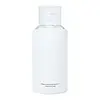What's inside
What's inside
 Key Ingredients
Key Ingredients

 Benefits
Benefits

 Concerns
Concerns

 Ingredients Side-by-side
Ingredients Side-by-side

Water
Skin ConditioningCitrus Limon Fruit Water
MaskingGlycerin
HumectantButylene Glycol
HumectantDipropylene Glycol
Humectant1,2-Hexanediol
Skin ConditioningNiacinamide
SmoothingLimnanthes Alba Seed Oil
Skin ConditioningOctyldodeceth-16
EmulsifyingPolyglyceryl-10 Stearate
Skin ConditioningSodium Citrate
BufferingEthylhexylglycerin
Skin ConditioningCitric Acid
BufferingDisodium EDTA
Parfum
MaskingHydrogenated Lecithin
EmulsifyingCentella Asiatica Extract
CleansingFicus Carica Fruit Extract
HumectantCeramide NP
Skin Conditioning3-O-Ethyl Ascorbic Acid
Skin ConditioningTocopherol
AntioxidantHydrolyzed Hyaluronic Acid
HumectantDimethylsilanol Hyaluronate
HumectantAscorbic Acid
AntioxidantHyaluronic Acid
HumectantPotassium Hyaluronate
Skin ConditioningSodium Hyaluronate
HumectantHydroxypropyltrimonium Hyaluronate
Sodium Hyaluronate Crosspolymer
HumectantSodium Hyaluronate Dimethylsilanol
HumectantSodium Acetylated Hyaluronate
HumectantPanthenol
Skin ConditioningSodium Ascorbyl Phosphate
AntioxidantTocopheryl Acetate
AntioxidantBiotin
AntiseborrhoeicFolic Acid
Skin ConditioningPyridoxine
Skin ConditioningRetinyl Palmitate
Skin ConditioningThiamine Hcl
MaskingCyanocobalamin
Skin ConditioningWater, Citrus Limon Fruit Water, Glycerin, Butylene Glycol, Dipropylene Glycol, 1,2-Hexanediol, Niacinamide, Limnanthes Alba Seed Oil, Octyldodeceth-16, Polyglyceryl-10 Stearate, Sodium Citrate, Ethylhexylglycerin, Citric Acid, Disodium EDTA, Parfum, Hydrogenated Lecithin, Centella Asiatica Extract, Ficus Carica Fruit Extract, Ceramide NP, 3-O-Ethyl Ascorbic Acid, Tocopherol, Hydrolyzed Hyaluronic Acid, Dimethylsilanol Hyaluronate, Ascorbic Acid, Hyaluronic Acid, Potassium Hyaluronate, Sodium Hyaluronate, Hydroxypropyltrimonium Hyaluronate, Sodium Hyaluronate Crosspolymer, Sodium Hyaluronate Dimethylsilanol, Sodium Acetylated Hyaluronate, Panthenol, Sodium Ascorbyl Phosphate, Tocopheryl Acetate, Biotin, Folic Acid, Pyridoxine, Retinyl Palmitate, Thiamine Hcl, Cyanocobalamin
Water
Skin ConditioningDiglycerin
HumectantGlycerin
HumectantTranexamic Acid
AstringentButylene Glycol
HumectantPEG-8
HumectantPEG-6
HumectantPEG-32
HumectantPPG-24-Glycereth-24
EmulsifyingMethylparaben
PreservativeCarbomer
Emulsion StabilisingPolysorbate 20
EmulsifyingStyrene/Vp Copolymer
Disodium EDTA
Hydrolyzed Hyaluronic Acid
HumectantMagnesium Ascorbyl Phosphate
AntioxidantTocopherol
AntioxidantSodium Hyaluronate
Humectant
 Reviews
Reviews

Ingredients Explained
These ingredients are found in both products.
Ingredients higher up in an ingredient list are typically present in a larger amount.
Butylene Glycol (or BG) is used within cosmetic products for a few different reasons:
Overall, Butylene Glycol is a safe and well-rounded ingredient that works well with other ingredients.
Though this ingredient works well with most skin types, some people with sensitive skin may experience a reaction such as allergic rashes, closed comedones, or itchiness.
Learn more about Butylene GlycolDisodium EDTA plays a role in making products more stable by aiding other preservatives.
It is a chelating agent, meaning it neutralizes metal ions that may be found in a product.
Disodium EDTA is a salt of edetic acid and is found to be safe in cosmetic ingredients.
Learn more about Disodium EDTAGlycerin is already naturally found in your skin. It helps moisturize and protect your skin.
A study from 2016 found glycerin to be more effective as a humectant than AHAs and hyaluronic acid.
As a humectant, it helps the skin stay hydrated by pulling moisture to your skin. The low molecular weight of glycerin allows it to pull moisture into the deeper layers of your skin.
Hydrated skin improves your skin barrier; Your skin barrier helps protect against irritants and bacteria.
Glycerin has also been found to have antimicrobial and antiviral properties. Due to these properties, glycerin is often used in wound and burn treatments.
In cosmetics, glycerin is usually derived from plants such as soybean or palm. However, it can also be sourced from animals, such as tallow or animal fat.
This ingredient is organic, colorless, odorless, and non-toxic.
Glycerin is the name for this ingredient in American English. British English uses Glycerol/Glycerine.
Learn more about GlycerinHydrolyzed Hyaluronic Acid is a form of hyaluronic acid. It is created by the hydrolysis of hyaluronic acid with a high molecular weight. Once created, Hydrolyzed Hyaluronic Acid has a low molecular weight.
Low molecular weight HA has been shown to hydrate and increase elasticity of the skin. Increasing elasticity is also associated with reduction of wrinkle depth.
One study found topical low molecular weight hyaluronic acid may be considered for the treatment of rosacea in the adult population. However, we always recommend speaking with a professional about your skin concerns.
Hyaluronic acids are a humectant. This means they draw moisture from the air. Hyaluronic acids help moisturize, soothe, and protect the skin.
Read more about other common forms of hyaluronic acid:
Learn more about Hydrolyzed Hyaluronic AcidSodium Hyaluronate is hyaluronic acid's salt form. It is commonly derived from the sodium salt of hyaluronic acid.
Like hyaluronic acid, it is great at holding water and acts as a humectant. This makes it a great skin hydrating ingredient.
Sodium Hyaluronate is naturally occurring in our bodies and is mostly found in eye fluid and joints.
These are some other common types of Hyaluronic Acid:
Learn more about Sodium HyaluronateTocopherol (also known as Vitamin E) is a common antioxidant used to help protect the skin from free-radicals and strengthen the skin barrier. It's also fat soluble - this means our skin is great at absorbing it.
Vitamin E also helps keep your natural skin lipids healthy. Your lipid skin barrier naturally consists of lipids, ceramides, and fatty acids. Vitamin E offers extra protection for your skin’s lipid barrier, keeping your skin healthy and nourished.
Another benefit is a bit of UV protection. Vitamin E helps reduce the damage caused by UVB rays. (It should not replace your sunscreen). Combining it with Vitamin C can decrease sunburned cells and hyperpigmentation after UV exposure.
You might have noticed Vitamin E + C often paired together. This is because it is great at stabilizing Vitamin C. Using the two together helps increase the effectiveness of both ingredients.
There are often claims that Vitamin E can reduce/prevent scarring, but these claims haven't been confirmed by scientific research.
Learn more about TocopherolWater. It's the most common cosmetic ingredient of all. You'll usually see it at the top of ingredient lists, meaning that it makes up the largest part of the product.
So why is it so popular? Water most often acts as a solvent - this means that it helps dissolve other ingredients into the formulation.
You'll also recognize water as that liquid we all need to stay alive. If you see this, drink a glass of water. Stay hydrated!
Learn more about Water